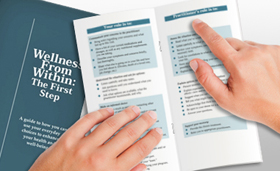Search Results
Accessing Our Inner Observer Part C

Marcey Shapiro, MD
Finding Emotions and Releasing in Our Body
Another tool for letting go is to note where you feel your emotions in your body. Different ones might show up in different places. Often people who are distressed are not aware of their body, yet their body is giving them valuable information about the situation. Personally, my tension generally goes into my shoulders. If I am very tense I can also get heartburn or feel like my stomach is in a knot. I have worked with patients who had various physical symptoms of anxiety.
Asthma, for example, is widely acknowledged, even among conventionally minded physicians, to have a significant emotional component. Chinese medicine explains that breathing is about the present moment, and often shortness of breath reflects a discomfort with being in the here and now.
When we notice our emotions in our body we can consciously begin to release the tension in those areas. Again we can drop the story line, as we work out the physical kinks. We can apply body-centered breathing techniques. We can stretch with yoga or movement. We can get some bodywork or do some self-acupressure or self-massage. There are many ways we can consciously encourage a tense body area to relax.
In his book Waking the Tiger, Peter Levine observed that after a stressful event, animals in the wild instinctively tremble, shake, stretch, yawn, or do any number of other physical releases to allow their nervous systems to rebalance. I have found deliberate shaking, trembling, howling, and yawning to be very helpful for myself and many of my patients.
Excerpted from Freedom From Anxiety: A Holistic Approach to Emotional Well Being by Marcey Shapiro, MD, published by North Atlantic Books, copyright © 2014 by Marcey Shapiro. Reprinted by permission of publisher.
Stay tuned for more thoughts from Marcey Shapiro, MD, on “Transforming Health” and Heart Centered Living




















